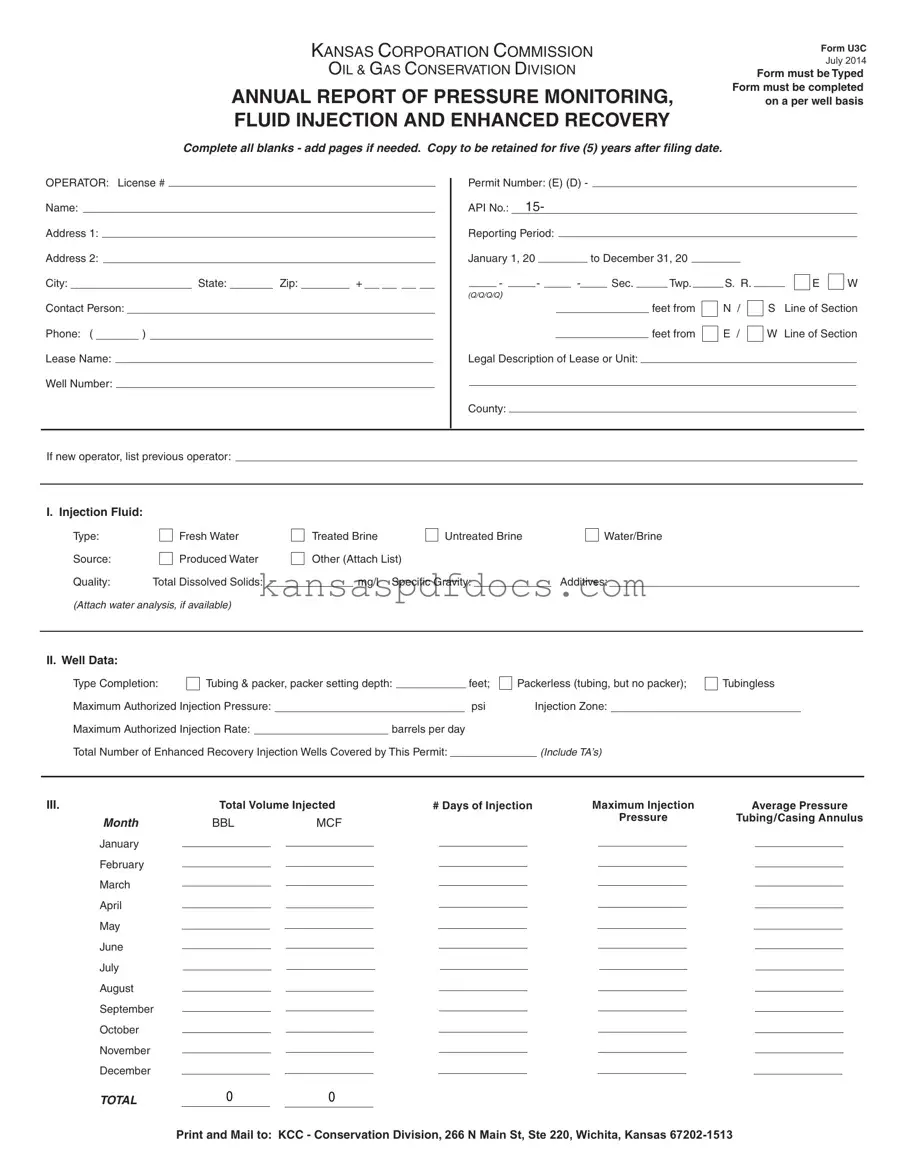The U3C Kansas form is a critical document required by the Kansas Corporation Commission's Oil & Gas Conservation Division. This annual report focuses on pressure monitoring, fluid injection, and enhanced recovery for oil and gas wells. Operators must complete this form on a per well basis, ensuring that all sections are filled out accurately. The form includes essential information such as the operator's details, lease name, and well number, along with the legal description of the lease or unit. It also captures specifics about the injection fluid, including its type, source, and quality, as well as the maximum authorized injection pressure and rate. Additionally, operators must report on the total volume injected and the average pressure throughout the reporting period. The U3C form must be typed and can be supplemented with additional pages if necessary. Once filed, it is crucial to retain a copy for five years. This report not only helps in regulatory compliance but also plays a vital role in the safe and efficient management of oil and gas resources in Kansas.
